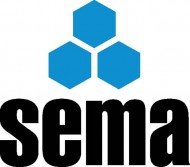This month we have a question regarding newly manufactured racking and what tests should be carried out prior to taking it to the marketplace. Our second question this month asks what specific procedures are needed when erecting racking outdoors.
 Proving loading capabilities
Proving loading capabilities
Q. We have recently manufactured a bespoke racking system for a client and would like to develop this into a generic system that we can supply commercially, is there a legal requirement for us to provide proof of loading capability and if so would this be something you could help us with or could we load test it ourselves and legally provide it to customers.
A. Shelving and racking systems are generally classified as work equipment and as such fall under the Provision and Use of Work Equipment (PUWER) Regulations.
Companies purchasing racking and shelving have an obligation to ensure that the equipment is suitable for use by their employees. This in general would mean that the shelving is strong enough and stable when fully loaded.
Similarly companies supplying racking and shelving also have an obligation to provide information to the user informing them how to use the product provided safely. This is obviously interpreted as including information on the safe working load of the product supplied.
There are no mandated British Standards for racking and shelving, unless the equipment is supporting mechanical handling equipment and then effectively it becomes part of the machine and falls under the machinery directive. If the shelving is free standing then in the UK SEMA Standards and Guidelines are generally considered the authoritative guidance.
If the shelving is low rise, i.e. less than 3.5m high then the SEMA Code of Practice for the Design of Low Rise Static Steel Shelving details a full scale test method to verify the overall stability of a shelving system and also individual components. Results obtained in the test will need to be corrected to take in to account actual yield stress against specified yield and actual material thickness against nominal thickness.
If it is high rise, or a pallet racking system as opposed to a shelving system then it becomes a combination of component testing and calculation to establish a safe working load
These full scale tests for small structures are relatively simple to undertake with very little special measuring equipment but will involve quite large weights in the shelving and need to be undertaken with great care as collapse can often be catastrophic and very sudden.
If you don’t want to undertake the tests yourselves some Universities or Independent test houses will be able to assist.SEMA can provide information on companies carrying out such work if requested to do so.
Building racking outside
Q. I would like to install some static pallet racking outside. We already have indoor racking which complies with the SEMA code of practice and is inspected accordingly.
Are there any extra checks we need to carry out on racking which is outside and how do we comply with regards to rusting of the uprights/beams?
A. The inspection checks for external racking are similar to internal racking; however, the design of the racking and the protective coating can be significantly different.
The supplier should design the racking to ensure that it is acceptable for the additional wind loading and the racking should be installed by trained installers who are members of SEIRS (Storage Equipment Installers Registration Scheme). The design often requires the use of different floor fixings to the standard fixings used on internal racking.
The normal painted finish provides very little corrosion protection for external racking which therefore rusts in quite a short period of time. The beams are generally not painted internally and can rust from the inside out. A competent ‘third party’ rack inspector, preferably a SARI (SEMA Approved Rack Inspector), will be able to give an opinion as to whether the racking will last for another year or whether it needs to be replaced. Racking with a galvanised finish is normal for external applications and will last longer outside. Any new rack purchased for an external environment should be designed to suit this environment with a galvanised finish.
SEMA is delighted to be working with WLN on the storage Question and Answer Column which is published in WLN on a monthly basis.
SEMA Technical Enquiries
We hope you find the articles interesting. If you have a query send it to us and we will do our best to have it answered by one of our experts.
SEMA Rack Safety Awareness and Inspection Courses
SEMA runs a one-day safety course on Rack Safety Awareness and Inspection. These courses are aimed at end users, giving an in-depth look at the need for inspections, how to conduct an assessment and what actions to take when this is completed.
SEMA Approved Rack Inspectors Qualification
Aimed at professionals who conduct rack surveys as an integral and significant part of their duties. It involves delegates in undertaking an in-depth SEMA Course, together with an examination and practical assessment. CPD will be an important part of the qualification, demonstrating to end users that SEMA Approved Inspectors maintain a high professional standard.
SEMA Publications
SEMA has 26 publications in stock – Codes of Practice, ‘Guides’ and European documents – all of which are available from our Offices.
SEMA USERS Club
SEMA runs a USERS Club designed to be of benefit to purchasers and users of storage equipment. Members receive newsletters, access to specialised events and discounted rates on publications and codes of practice.




Comments are closed.